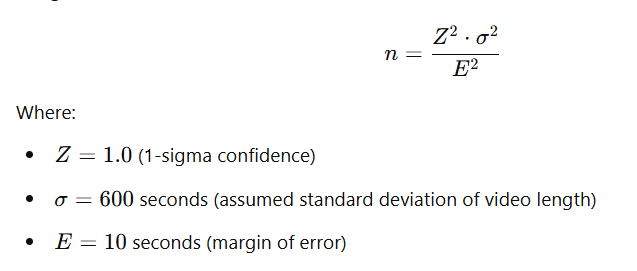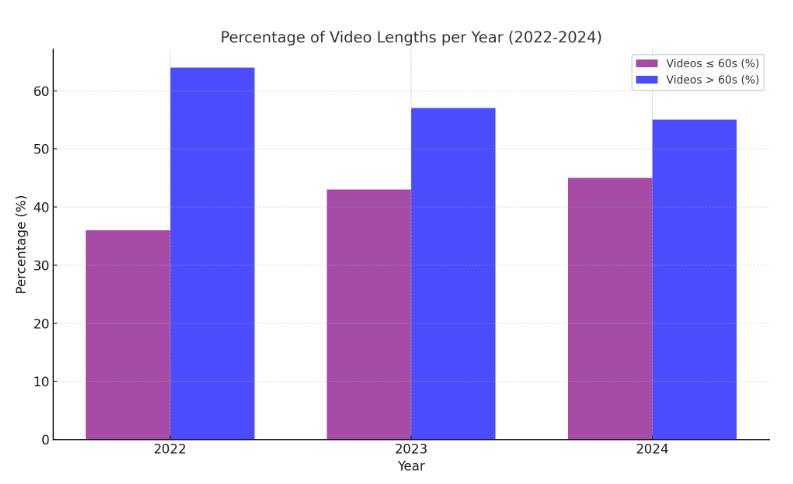YouTube is an unparalleled data source for understanding content trends, but its scale makes direct analysis a challenge. By applying smart sampling techniques, I explored trends in video lengths and the rise of short-form formats like YouTube Shorts. Here’s how I tackled it:
YouTube: A Vast Video Database
Every day, over 4 million videos are uploaded to YouTube, amounting to more than 1.3 billion new videos annually. Querying such a massive dataset exhaustively isn’t feasible due to API rate limits and time constraints. To address this, I turned to statistical sampling as the key to uncovering trends efficiently and accurately.
Designing the Sampling Approach
To ensure statistically valid results, I calculated a sample size of 3,600 videos to estimate average video lengths with a 68% confidence level (1-sigma) and a ±10-second margin of error.

Using random time intervals, I retrieved one video for every selected moment in the year, leveraging the YouTube API. And by spreading the queries over a few days and using several non-connected APIs, we stayed within YouTube’s free-tier quota while maintaining reliable results.
This approach required just ~90,000 API units:
- 3,600 search queries (100 units each): 3,600×100=360,0003,600 \times 100 = 360,000.
- By batching video metadata lookups (50 IDs per request), the additional cost was negligible.
The random sampling ensured unbiased data while staying within YouTube’s API limits of 10,000 units per day. This meant that the sampling process required 9 days to complete:
- 3,600 search queries (100 units each) consumed 360,000 units.
- Metadata lookups for video details added minimal cost, as they were batched into fewer queries.
Sampling Script: Automating the Process
To streamline this, I created a JavaScript tool that automates the sampling process. It fetches video data using a YouTube API key and organizes it for analysis. The tool is open-source and available on GitHub.
Results: Video Lengths and Trends


The sampled data revealed some compelling insights:
- Videos Are Getting Shorter: Over the past few years, the average video length has decreased, highlighting a shift toward short-form content.
- Rise of YouTube Shorts: The proportion of videos under 60 seconds has grown steadily, reflecting changing viewer preferences and the platform’s push for Shorts.
For a detailed breakdown, including the full results and visualizations:
Key Takeaways
Random sampling enables us to extract meaningful trends from YouTube’s vast dataset with precision and efficiency. This method uncovers key insights into the platform’s evolving landscape, such as the growing dominance of short-form content and changing audience preferences.
By combining statistical sampling with YouTube’s API, we can extract actionable insights from a massive dataset while working within technical constraints. This analysis provides a window into how content trends are evolving, empowering creators, marketers, and researchers to adapt to the shift toward shorter, more engaging formats.
As platforms like YouTube continue to grow, techniques like these will be essential for transforming vast, unstructured datasets into meaningful knowledge.
